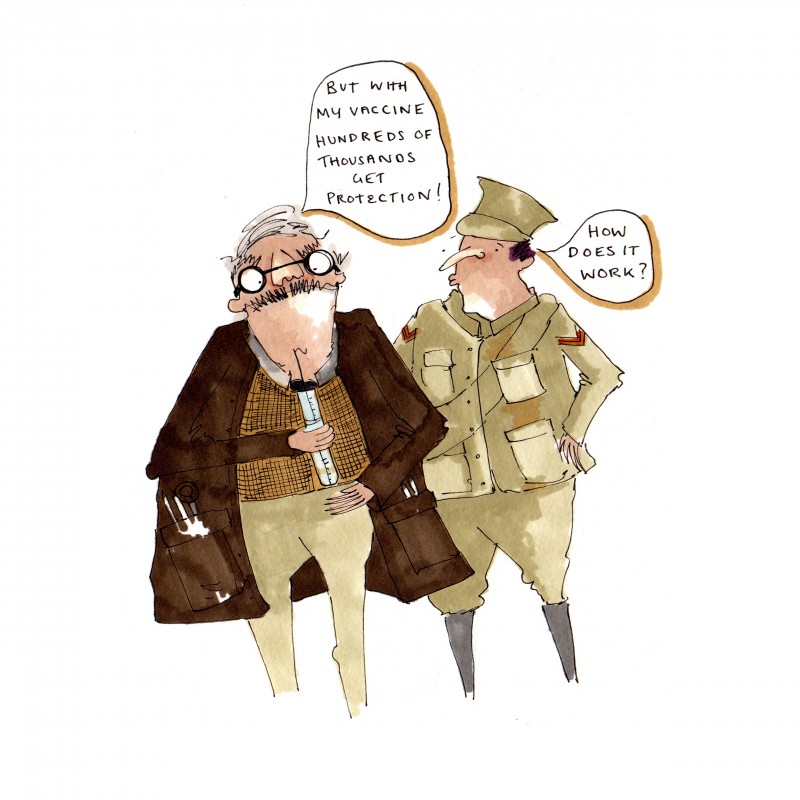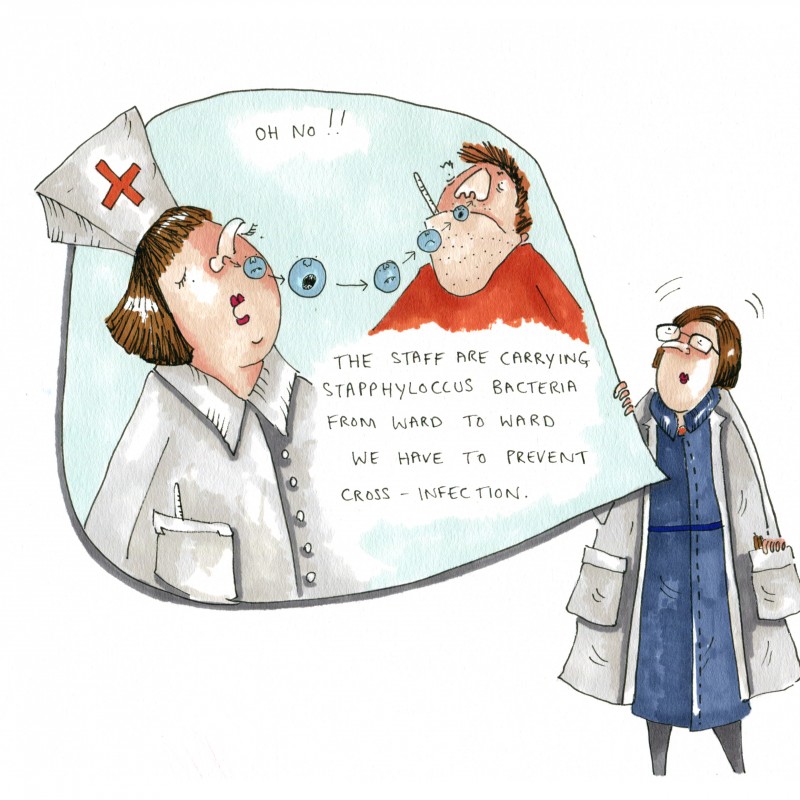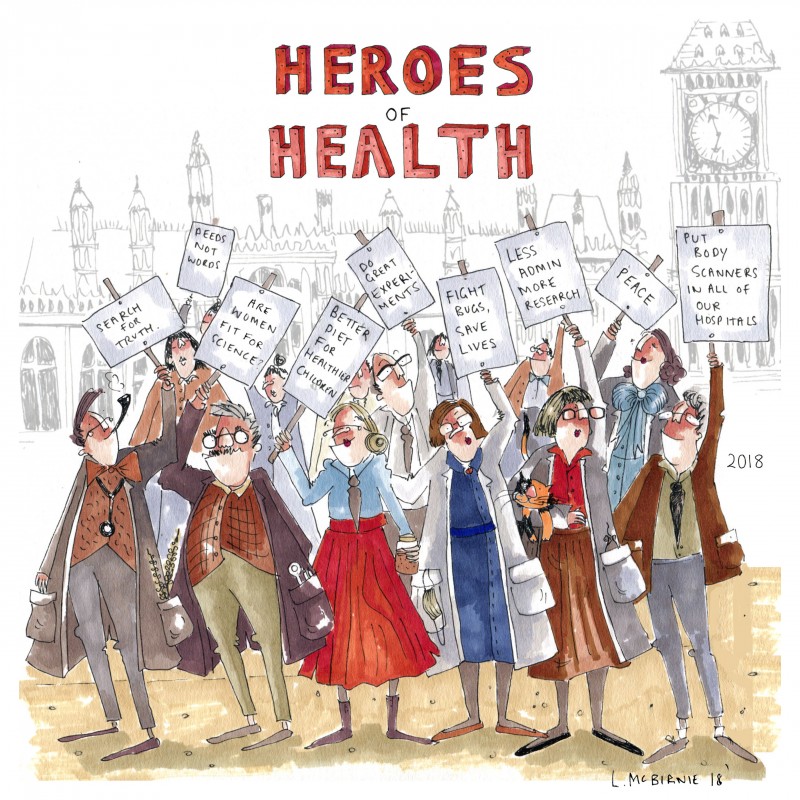By Sophie Arthur
July 25, 2018
Time to read: 4 minutes
On Wednesday 25 July, MRC LMS will be celebrating #NHS70 at this month’s Medicine themed Science Museum Lates. This series of preview articles will give you a taster of what our team from Hammersmith Hospital will be sharing on the evening. Handle objects featured in our ‘Heroes of Health’ comic, meet researchers using AI for heart disease treatments and researchers using psychiatric imaging for mental health treatments, and share your response to ‘should doctors do research?’

The MRC LMS exhibit, themed ‘Should doctors do research’, at this month’s Science Museum Medicine Lates will share and discuss stories from our Heroes of Health comic, which was created to celebrate 105 years of the Medical Research Council (MRC). The comic features the stories of eight revolutionary scientists who were pivotal in the history of both the MRC and of medical science itself and we will be focussing on the stories of Mary Barber and Almroth Wright, both of whom were doctors who carried out scientific research that had life-changing impacts for people around the world.
Sir Almroth Wright: Icon of immunology (1861-1947), began his career as a doctor, before taking up medical research at the Royal College of Physicians and Surgeons in 1889.1 Almroth’s supervisor at this time, Dr German Sims Woodhead, was the advisor on Pathology to the British Army, sparking Almroth’s long-standing connections to the Medical Services of the Army, where he took the position of Professor of Pathology at the Army Medical School in 1892.2

Almroth developed the technique of the “Teat and Capillary Glass Tube”, used to test patient’s blood for typhoid and other fevers. Convinced of his ability to develop a vaccine for typhoid fever, he even tested the vaccine on himself initially. He went on to successfully produce a typhoid vaccine, which was used to inoculate British soldiers in the Boer war, becoming known as Britain’s first Immunologist.1
Professor Mary Barber: Hidden hero of bacteriology (1911-1965), was a doctor at Hammersmith Hospital, the home of MRC LMS, for the majority of her career.3 During her time at Hammersmith, Mary found that staphylococcus bacteria were becoming resistant to antibiotics, and that this led to increasing cross-contamination in hospitals.4 Mary utilised this understanding gained from being both a doctor and a scientist to implement practical measures in hospitals to change antibiotic use and reduce cross-contamination. Praised for her excellence in both the medical and scientific worlds, Mary’s work in the lab was always with the benefit of patients in mind, leading to outstanding breakthroughs in medical science.5

To pick up a free a copy of Heroes of Health and handle some of the key objects discussed in Mary and Almroth’s stories, head to Information Age on the 2nd floor of the Science Museum, London, Exhibition Road, this Wednesday, 25 July, 18.45 – 22:00.
Medicine Lates #NHS70 is at 18:45-22:00 on 25 July at the Science Museum, London, Exhibition Road.
Science Museum Lates is a series of adults-only, after-hours themed nights that take place on the last Wednesday of every month and feature interactive activities, hands-on stands, cutting-edge researchers, live music, museum tours and a silent disco.
References
1. IBMS History Committee, Health for Heroes. Available at: https://www.ibms.org/resources/documents/health-for-heroes-typhoid-vaccine/health-for-heroes-typhiod-vaccine.pdf.
2. In Memoriam. Sir Almroth Wright. (1947). Journal of the Royal Army Medical Corps. Available at: http://jramc.bmj.com/content/jramc/88/6/250.full.pdf.
3. M.R. Pollock Mary Barber Obituary J Clin Pathol: Nov (1965) 10.1136/jcp.18.6.697. Available at: http://jcp.bmj.com/content/jclinpath/18/6/697.full.pdf.
4. Barber, M. (1947). Staphylococcal Infection due to Penicillin-resistant Strains. British Medical Journal, 2 (4534), 863–865. Available at: https://www.ncbi.nlm.nih.gov/pmc/articles/PMC2056216/.
5. L.P. Garrod, ‘Mary Barber 3 April 1911–11 September 1965,’ Journal of Pathology and Bacteriology, 92 (1966), 603–10. Available at: https://doi.org/10.1002/path.1700920247.
By Ellie McLaughlin, Science Communications Intern, GECo.
Heroes of Health comic book illustrations by Lindsay McBirnie.
Our previous two articles highlight the other sections of our Lates exhibit: AI heart doctors and mental health imaging and Should doctors do research?